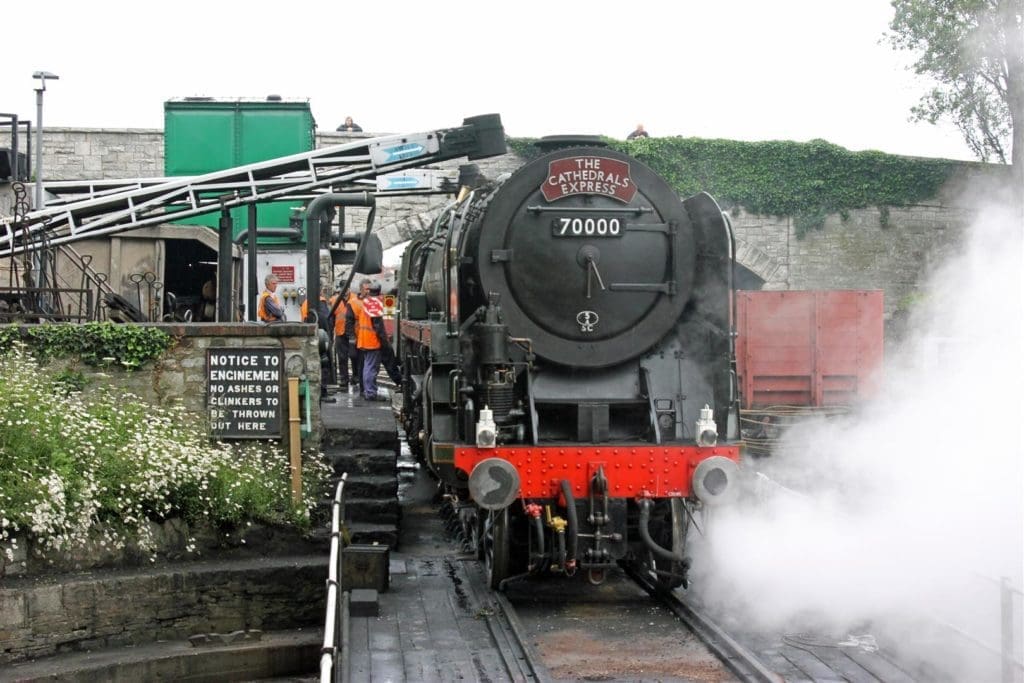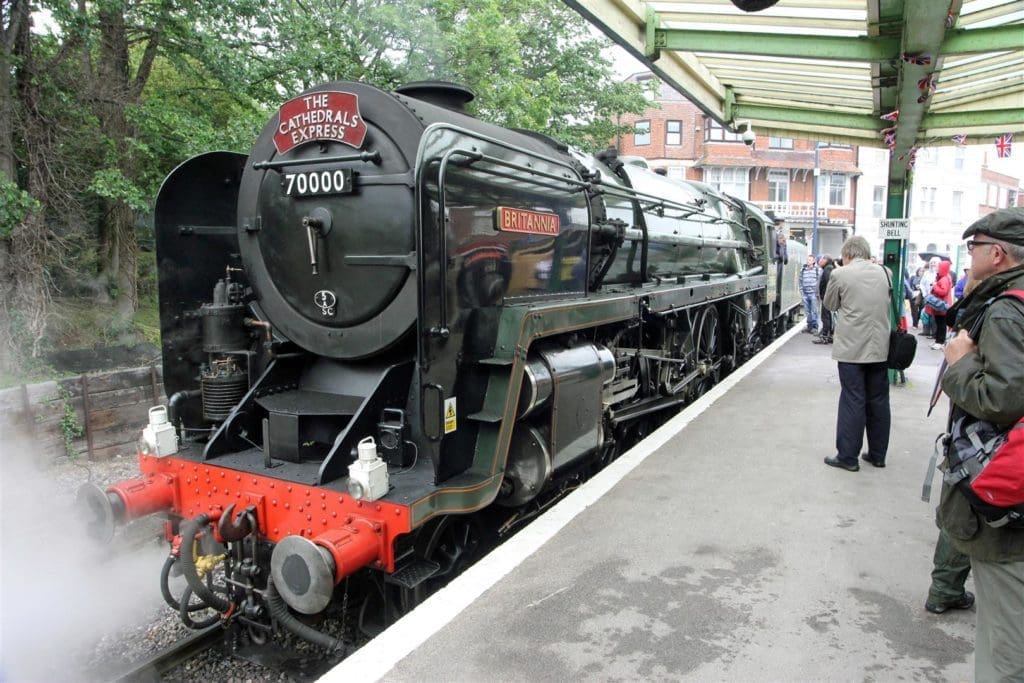
The public is being given the chance to experience driving No. 70000 Britannia on the Swanage Railway, with a full train of carriages in tow.
Twelve driver experience slots are available on March 27 and 28 to take control of the 95-ton express locomotive that had the honour of hauling the funeral train of King George VI from King’s Lynn in Norfolk to London during February 1952.
Britannia is starring in the railway’s three-day Spring Steam Gala, running on March 24-26. With one driver experience participant on Britannia’s spacious footplate – and under the guidance of an experienced locomotive crew – the public can experience the excitement of being at the regulator of No. 70000 on an 11-mile, one-hour return journey from Swanage.
Robert Patterson, the volunteer chair of the Swanage Railway Company, which runs the trains for the Swanage Railway Trust, said: “It’s like offering people the chance to pilot the iconic Concorde or drive a classic Formula One racing car – the stuff that amazing memories are made of.
“Unlike the Swanage Railway’s usual driver experience trains, this exciting premiere Britannia taster driver experience offers the participant double the driving miles and double the driving time at the regulator of No. 70000 through the beautiful Purbeck countryside.”
Built at Crewe and completed in January 1951, No. 70000 Britannia was the first British Railways Standard design locomotive and the first of 55 Britannia class locomotives to be built. The powerful Class 7 was withdrawn from British Rail service in May 1966 after 15 years of service on main line express trains out of North London to the east coast and across the London Midland Region of British Railways.
Swanage Railway Trust volunteer chair Gavin Johns explained: “It is historically important because it was the first steam locomotive of the new early 1950s range of standard designs to be built by British Railways aimed at taking our country’s railway network through the 1950s and the 1960s and replacing worn out steam locomotives from the late Victorian and Edwardian era.
“The early 1950s saw British Railways design a range of standard steam locomotives, of varying power classifications that shared common parts with the new steam locomotives being cheaper to run and maintain.
“The last of the British Railways standard design of steam locomotives worked right up to the final day of steam traction on British Rail, in the north of England, during August 1968.”
The experience costs £550 per person. Participants must be aged 18 or older and complete a health and safety declaration. To book, visit swanagerailway.co.uk







